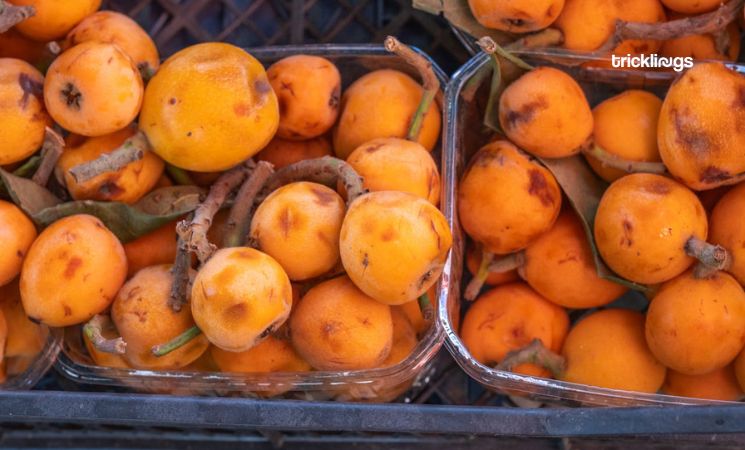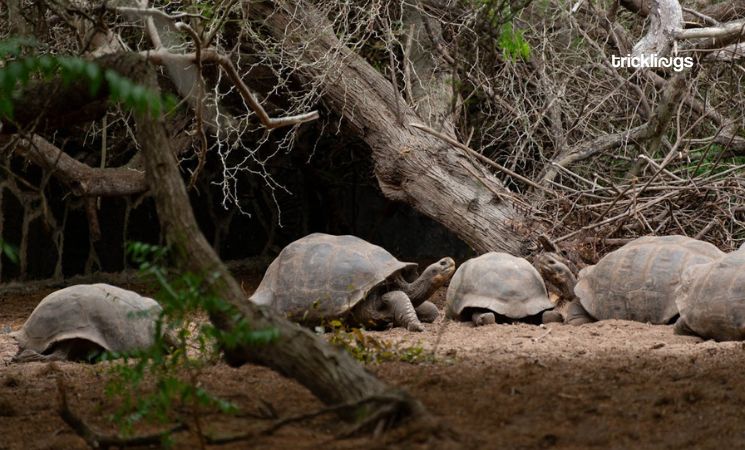In a world brimming with rapid change, a small, slow-moving creature remains rooted in time, tethered to the rhythms of nature in a way few other species are. Enter the gopher tortoise, a humble yet essential member of the southeastern United States’ ecosystem.
Often unseen as it burrows deep underground, this remarkable reptile serves as both a tenant and a landlord in its complex natural habitat.
The gopher tortoise is more than just a wanderer of forests and grasslands. Its burrows, which can stretch over 40 feet long, shelter not only the tortoise but provide sanctuary to over 350 other species.
These burrows are the hidden lifeblood of an ecosystem that relies on their architecture for survival in times of fire or extreme weather. In a way, gopher tortoises are nature’s architects, creating homes for countless others, and in doing so, they become keystones in their environment.
What Do Gopher Tortoises Eat?
But what keeps this industrious creature going? The diet of the gopher tortoise is as humble as the animal itself. Predominantly herbivores, they feed on a mixture of grasses, wildflowers, leaves, and various fruits.
Among their favorite snacks are wiregrass and other low-growing plants that are often found in open, sunny habitats. Their eating habits may seem simple, but they play a vital role in keeping the plant life in balance, much like a carefully tuned orchestra.
Gopher tortoises will consume a variety of fruits if available, particularly those that fall to the ground. Among these potential fruit treats is the loquat, a sweet, tangy fruit native to Southeast Asia but often found in warmer climates, including parts of the U.S. where the gopher tortoise roams.
What Are Loquats?
The loquat is not as common as your garden-variety apple or orange, but it has quietly made its way into warmer regions, such as Florida and California, where gopher tortoises also reside. The loquat tree produces small, yellow-orange fruits with soft, juicy flesh, which are often enjoyed by humans and wildlife alike.

Loquats are high in vitamins A and C, as well as antioxidants, making them a nutritious option for any creature fortunate enough to come across them.
While gopher tortoises are not known to actively seek out loquat trees, their opportunistic nature means they will eat the fruit if it’s available in their surroundings.
The fallen fruits of the loquat tree provide an easy meal for the tortoises, much like the way they consume wild berries or other naturally occurring fruits in their habitat.
Connection Between Species and Environment
The gopher tortoise and the loquat provide an intriguing connection between native and non-native species, underscoring how ecosystems are constantly shifting. In this case, the gopher tortoise, a creature deeply tied to its environment, has found a way to thrive in spaces that now include non-native plants such as the loquat tree.
This unexpected relationship between tortoise and tree serves as a reminder that nature constantly adapts, incorporating new elements into the complex web of life.
As we reflect on the tortoise’s vital role in the ecosystem, we are also reminded of the precarious balance that exists in nature. Gopher tortoises are considered a threatened species due to habitat destruction, and their burrows are often bulldozed in favor of development.
Their homes—both literal and figurative—are under threat, much like the ecosystems they support. Much like the fruits they consume, their existence is fragile, and their survival relies on the preservation of the habitats that sustain them.
In conclusion, the gopher tortoise, a symbol of quiet perseverance, and the loquat, a fruit that has found its way into new territories, provide us with a lesson about adaptation and survival. The tortoise’s ability to create homes for others and consume what the land offers speaks to the intricate balance of nature, where even the smallest interactions can have a profound impact on the broader ecosystem.
Common Questions About Gopher Tortoises and Their Habitats
What are Florida’s pine flatwoods shaped by?
- Florida’s pine flatwoods are shaped by biotic and abiotic factors, with wildfires playing a crucial role in maintaining these habitats.
Why are wildfires important for these habitats?
- Wildfires help keep the habitats healthy by preventing invasive plants from taking over, allowing fire-adapted plants to thrive.
How do animals survive wildfires in these habitats?
- Most animals can outrun wildfires, but slower animals, like gopher tortoises, take refuge in burrows.
How do gopher tortoises adapt to wildfires?
- Gopher tortoises sense vibrations and take shelter in their deep burrows, which protect them from the flames.
What do gopher tortoises eat?
- Gopher tortoises primarily eat grasses and fruits, such as the gopher apple, common in Florida’s scrub habitats.
What is an ecosystem engineer, and how are gopher tortoises considered one?
- An ecosystem engineer is a species that creates or modifies habitats. Gopher tortoises excavate large burrows that provide shelter for other species, making them important ecosystem engineers.
How many species benefit from gopher tortoise burrows?
- As many as 350 species, including armadillos and the Florida mouse, benefit from gopher tortoise burrows.
What is the purpose of setting up trail cameras on gopher tortoise burrows?
- Trail cameras are set up to observe and learn more about the various animals that use gopher tortoise burrows.
What is commensalism, and how does it relate to gopher tortoises?
- Commensalism is a relationship where one organism benefits, and the other is neither harmed nor benefited. Snakes like the Eastern coachwhip share burrows with gopher tortoises in a commensal relationship.
Why do animals like bobcats visit gopher tortoise burrows?
- Animals like bobcats may visit burrows out of curiosity or to hunt prey, such as the Florida mouse or rabbits.
What threats do gopher tortoise eggs face?
- Gopher tortoise eggs face predation from animals like raccoons and armadillos, contributing to low hatching success rates.
How do gopher tortoises react to flooded burrows during heavy rains?
- Gopher tortoises surprisingly enter the water, possibly to cool down, and they can hold their breath for extended periods.
How long can gopher tortoises live?
- Gopher tortoises can grow up to a foot long and live to be around 90 years old.
What is a key threat to gopher tortoises?
- Habitat loss is a significant threat to gopher tortoises, making conservation efforts crucial for their survival and the survival of other species dependent on their burrows.













